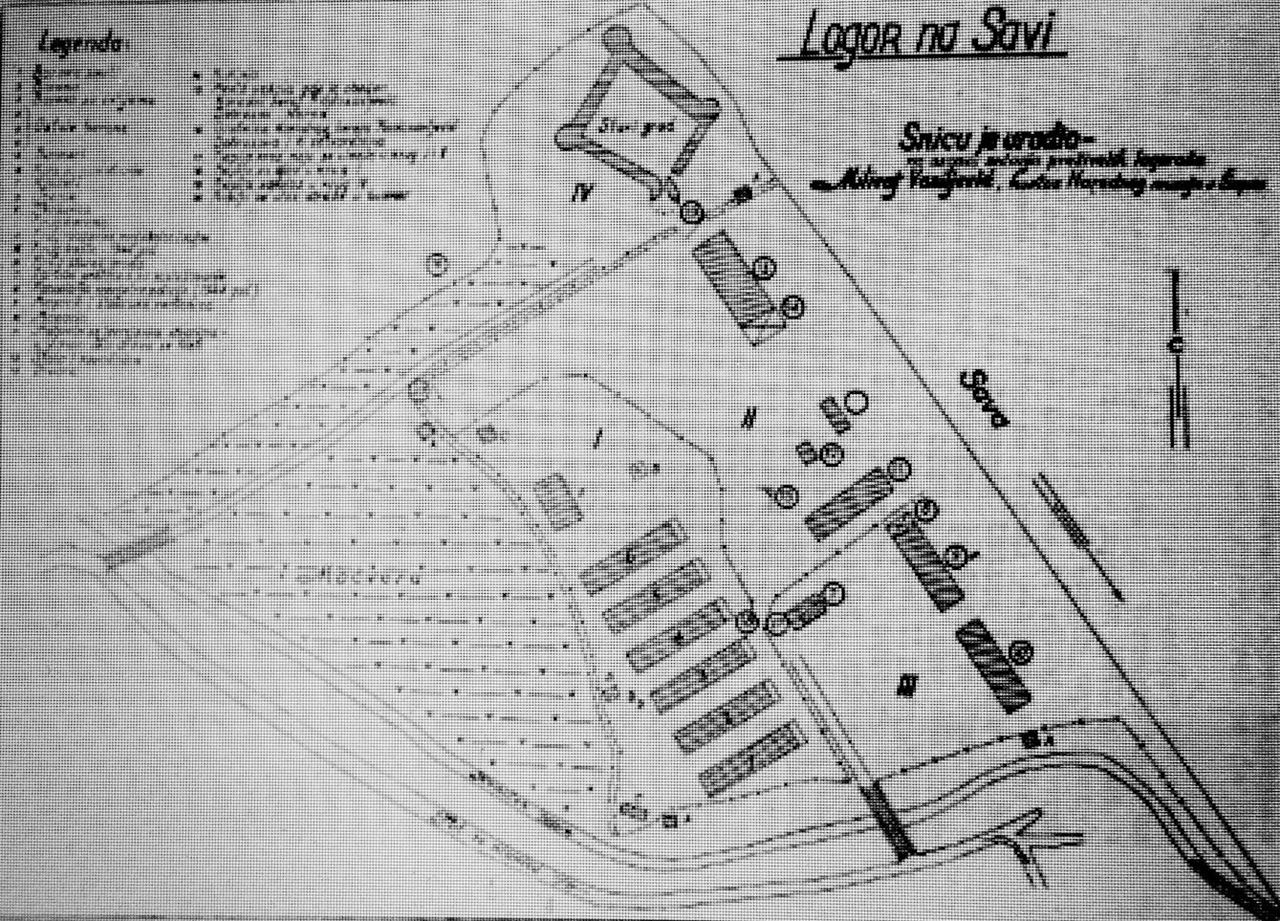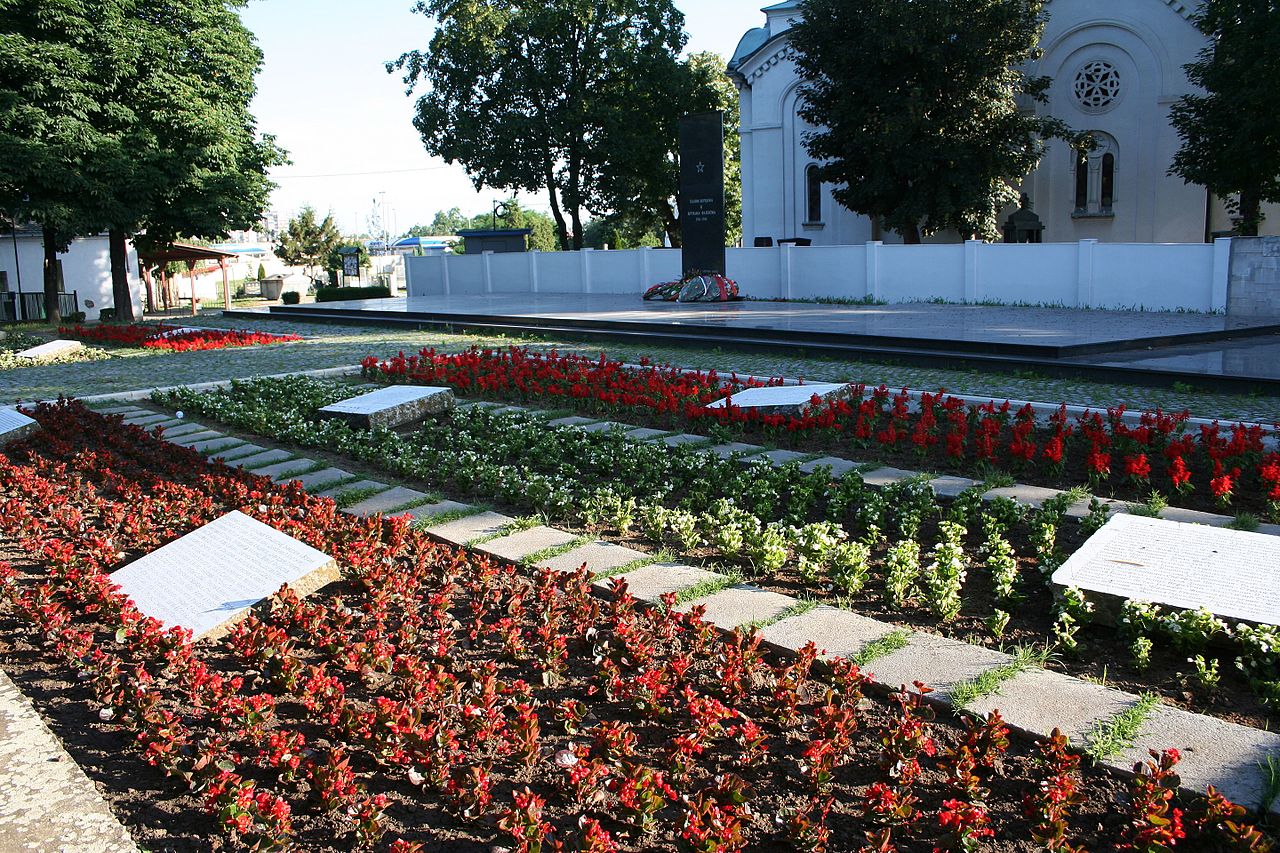|
|
Period:
Second World War
Region:
Serbia
Nazi camp Barracks on the Sava in Šabac
Camp Barracks on the Sava, one of the three concentration camps in Šabac city alone, was built in 1941. by the Nazi Germany war units. It is one of many within the concentration camps network, spreading all over the occupied Serbian territory.
This camp of horror was active for over 3 years (20th of July, 1941. - 19th of September, 1944.), up until the liberation of Šabac. Over 30,000 people went through it - mostly Serbs, followed by Jews and Roma.
Camp Barracks on the Sava was housed in the military barracks (hence the name), located in the area of the old part of the Šabac city. It consisted of 6 barracks, an administration building, a warehouse, a workshop, and a kitchen. It was secured by two rows of barbwire fence on the outside, and guard posts and several guards towers on the inside.
Within the Nazi German-occupied territory of Serbia, Camp Barracks on the Sava was in the fourth place with its terror and death toll proportions, right after the concentration camps Sajmište, Banjica (both in Belgrade), and Crveni Krst in the city of Niš. After WW2, "The Yugoslavian National Commission for the detection of crimes of occupiers and their helpers" collected an inventory of over 2,500 names of the victims.
BACKGROUND
The Kingdom of Serbs, Croats, and Slovenians, the first South Slavic state, later renamed into the Kingdom of Yugoslavia, was created after the First World War, with its promulgation on December 1, 1918, in Belgrade. The territory of the Yugoslav Kingdom was divided into banates in 1929 and the structure of its government was a parliamentary monarchy.

Proclamation of the first South Slavic state
The royal title was held by the Serbian Karadjordjević dynasty. It consisted of Southern Serbia, Šumadija, Raška, Kosovo and Metohija, Eastern Serbia, Montenegro, Bosnia and Herzegovina, Vojvodina, Slavonija, a small part of Dalmatia, the Dubrovnik Republic, Lika, Kordun, Banija, Zagorje, Gorski Kotar, and Slovenia.
After the assassination of King Alexander I Karadjordjević in Marseilles on October 9, 1934, the country was ruled by regents: Prince Paul Karadjordjević, Dr. Radenko Stanković, and Dr. Ivo Perović, and the government was formed by Dragiša Cvetković and Vlatko Maček.

Belgrade's demonstration on March, 1941.
In the mid-1930s, Europe witnessed the rise of Nazism and Fascism, especially in Germany, Italy, and Spain. This led to the formation of the Tripartite Pact, on September 27, 1940, between Germany, Italy, and Japan. In the next months, this alliance was joined by the following countries: Hungary, Bulgaria, Romania, Albania, etc. Thus, the Kingdom of Yugoslavia found itself surrounded by Axis Powers.
In Vienna, on March 25, 1941, the signing of the protocol between the Kingdom of Yugoslavia and Nazi Germany took place regarding the passage of German and Italian troops through Yugoslav territory. Among the patriotic forces of the Kingdom of Yugoslavia, this was interpreted as treason, and the British and Soviet intelligence officers organized a military coup and demonstrations on March 27, 1941 in Belgrade resulting in the overthrow of the governorship led by Prince Paul and putting on the throne a minor king Petar II Karadjordjević.
Hitler changed the plans and the armed forces' plans to attack Greece, were diverted to the Kingdom of Yugoslavia.
CAMP INCEPTION
Preparations for the opening of the concentration camp in the city of Šabac commenced as soon as the Nazi German occupiers established their military and civil authority. Its purpose was to intimidate the local population, in order to prevent their potential rebelling, as well as for keeping hostages who'd be killed in retribution.
Therefore, this camp was established on July the 20th, 1941. in already existing pre-war military barracks of The Kingdom of Yugoslavia. Its structure varied from the County Jail one, as it resembled a concentration camp structure more. Later on, the camp detainees were sent further to other camps in Serbia or Germany.
CAMP ADMINISTRATION
Nazi German officers constituted the camp administration who, along with the local ethnic German population, aka Volksdeutsche (Vojvodina Danube Swabians), imposed the incarceration conditions and executions.
Fearing camp breaks, Nazi Germans held tight security measures.
CAMP INFRASTRUCTURE
The Camp was housed in the old military barracks of the ex-Royal Yugoslav Army, on the river Sava's right-hand side bank, where the Old City lays (over 500-year-old fortress, dating back to the Ottoman Empire times).
The camp infrastructure consisted of 6 barracks, opposite of which were the administration building, a warehouse, a workshop, and a kitchen. Laid out in a triangular shape, bordering the river Sava on the North-East, Nazi Germany military camp on the North and smaller river Kamičak along with a road towards the city's abattoir on its South.

The size of the barracks was 45 meters in length and 10 meters in width. Each had two main entrances (northeastern and southwestern), as well as two big rooms accessed via small vestibules, located on both sides of the barrack. Up to 70 prisoners could be housed in the common premises.
The camp was wedged between the rivers Kamičak and Sava on its two eastern sides, and by the Nazi German army camp, on its third. First, it had one, but then it got two barbed wire fences. Several watchtowers were located within the camp premises.
CAMP CONDITIONS
"Kladovo-Transport" Jewish refugees arrived in July, while local Jews (men, women, and children) arrived by the end of August. Just over 1,000 of them in total. They were the first prisoners of Camp Barracks on the Sava and the only ones until January 1942.
On the Christian Orthodox religious holiday of St. Cyriacus (aka Miholjdan), on October the 12th, 1941. all men from the camp were congregated and taken to the Zasavica village of Mačva District, all to be executed. The remaining women and children were transported in January of 1942. to the Belgrade concentration camp Sajmište.
After the Jews, in the first half of 1942. Nazi Germans brought to the camp several hundred apprehended Bosnian Serbs, followed by the partisans from the Podrinje region (BIH), Valjevo and Užice cities (Serbia), and other places. In January 1942. several hundred Chetniks army members, of Jezdimir Dangić formation, arrived too.
By April of 1942. most of the imprisoned partisans were executed, with a small number of prisoners released, leaving the camp practically vacant.
Between the two spring seasons of 1942 and 1943, the camp population consisted of "disobedient" ones, who failed to fulfill their duties of giving grain and livestock to the occupier, along with prisoners used as forced laborers.
The camp amassed in a new prison population in the spring of 1943. by both SKOJ and Chetniks members. Up until the end of WW2, both formation members (partisans and chetniks) were alternately being brought in and out. Upon being tortured, they would be either further imprisoned or executed.
CAMP CLOSURE
At the start of 1944. Nazi German occupiers conducted new mass imprisonments of the National Liberation Movement members by arresting in only a few days' time, over 200 Serbs from the Podrinje region. Most of the prisoners were then transported further, via Banjica camp in Belgrade, to Germany.
The last prisoners of the camp were transported to Banjica camp in Belgrade on the 19th of September 1944., while some were set free. That was the date on which the camp officially ceased to exist.

The sight of the camp's remains at the beginning of the 21st century.
NUMBER OF CASUALTIES
Approximately 30,000 prisoners went through the concentration camps of Šabac city, during the WW2.
Besides these mass killings, Nazi Germans conducted executions of smaller or bigger groups of people, within the camp itself or elsewhere, making the total number of such casualties approximately 2,500 people, most of whom were Serbs.
YEARS LATER
Upon the WW2 end, the communist regime prohibited public discussions about the crimes against Serbs, especially in the western and central regions of the country.
The casualties of Nazi Germany's camps in Šabac had never gotten their dedicated monument. Only few commemorative memorial plaques in Donjošorski cemetery in Šabac.

PUBLICATIONS
Only a few books have been published about this camp of terror: "Šabac camps", by the author Stanoje Filipović, published in 1967.
"1941-1944 Terror and Crimes of Nazi Germany in Serbia", by the author Vencislav Glišić Ph.D., was published in 1970. Chapter IV being dedicated to the Šabac camps and Camp Barracks on the Sava.
No documentaries were ever filmed.
Tags:
Please, vote for this article:
Visited: 2568 point
Number of votes: 14
|